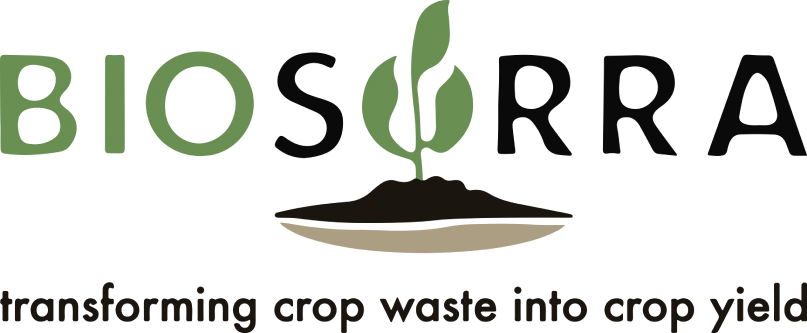
Business basics that are working (and not) for our partners during the crisis.
By Bart Burstein | Co-founder of Pace Able Foundation
We’re now five months into the global pandemic. Back in April, we wrote about the need for social ventures to reset their organizations to survive. Some companies have responded well. And others… not-so-well.
While we’re far from being able to post-mortem this strange chapter in history, we have gleaned some pertinent lessons to date. Through watching the ways our grantee partners have reacted to the crisis, we’ve compiled a shortlist of what seems to be useful. You’ve likely taken some of these steps for your own organization. So our intention with this post is to provide a grab bag of tools and approaches, from which you may find one or two new ones to try.
BACK TO BASICS
This is an ideal time to do a quick assessment of what your enterprise is about – who and how you serve your community, and how you organize yourself.
State your clear purpose and make even clearer communications. Your served community is disoriented. And you’re likely communicating internally via phone or video, which isn’t ideal. Leadership is about being clear on what your organization is doing and what each team member’s role is. Then supporting the team and encouraging discussion. Consider these ideas:
- Fully utilize all the tools you have for internal comms – WhatsApp groups and video chat, Zoom, simple one-on-one calls, plain old email, or text updates. Overcommunicating will help everyone (including you) reorient.
- Implement consensus decision making at the executive level, combined with all-hands communication to the rest of the team as mentioned above.
- Engage in conversation with your community to ensure they know how you serve them, especially if you’ve added crisis products or efforts. Get creative and be aggressive in making known what you’re doing and how to access it.
- Simplify your mission. Now is a good time to clarify – if not outright pare down – what you do for the next period.
Uncover what has changed in your community, and adapt based on the current needs. Some of our partners have doubled down on what they do, some have pivoted. It all depends on the identified, actual needs. So be sure you understand what has changed based on COVID-related medical and financial considerations. And trickier but more important: what may change going forward.
- Consider how to serve beneficiaries with limited resources.
- As mentioned above, see if you can get ahead of the current crisis a bit. It may not be possible, but in some situations you can help. An example: for rural subsistence farming communities, the next planting cycle is likely at risk. Can your organization help?
- Take advantage of your own wider support community. Can you get specific crisis consulting or other support from your board, informal advisors, or peer impact organizations?
Make quick and adaptable responses. None of us has been here before. Don’t hesitate to test a program, measure its results, and pivot based on effectiveness or perhaps a changing situation. Even if that means canceling 2020 programs and repurposing fees to next year.
Your financial resources – in the bank and on the way – determine what you’re able to take on. This should always be the first principal, but even more so during this time.
BUT… IT ALL DEPENDS ON FUNDING
We’ve talked about some core issues: organizational tuneup and served community (re)assessment. But in the end, you can only do as much as you have resources to support. Your financial resources – in the bank and on the way – determine what you’re able to take on. This should always be the first principal, but even more so during this time.
I’m taking together your customer revenue forecast, donor (current and new) funding, and your opportunity for equity investors (if you’re a for-profit). Loans are another source of funding, but not one we’ve seen this year.
Take a good look at your mission. The outcome can be sorted into three categories:
- If your funding is secure for a time and your served community needs support, you can and should continue – or even increase – what you do.
- If your funding is secure but the needs of your served community have changed, think about “zooming in” on a few or a single service that’s still relevant and needed.
- If your funding is not secure, it’s time to cut back the core business significantly (lightweight presence). If contraction is indeed necessary, you can look to rebound later.
Make a funding analysis and answer “what does ‘secure’ mean”?
- If you’re grant-supported, be in touch with all your funders – current and even past. Policies vary widely, with many funders ‘doubling down’ on existing donees. If future funding has been committed, check that you’re still designated on the list.
- Product revenue in a COVID world is all over the map. Take a clear-eyed look at what your customers need, have resources to buy, and what they can pay. Budget even more conservatively than this analysis tells you to.
- Our partners’ experience with equity investing has been uniformly troublesome: impact equity investors have pulled back significantly. If my experience in past recessions is any guide, this behavior will continue well into 2021. Existing owners may well be willing to provide convertible or straight loans – likely on a reduced operating budget. Don’t assume the situation will turn better anytime soon.
Our partners have struggled to match the list of ‘what they need to do’ (derived from some of the analysis above) with what they have resources to do. But our experience to date has been that going through some form of what we’ve described – lightweight and informal all the way to involving your board – can set you up best for the coming challenges and future ahead.
WHAT’S NOT WORKING TO DATE
What’s not working is a much simpler tale. Here’s a list of actions to avoid:
- Not being level headed about strengths and weaknesses.
- Not having cash reserves.
- Unrealistic fiscal planning.
- Stretching out fundraising (equity).
- Not taking cost reduction steps quick enough, as cash dwindles.
- Being reliant on a few (or one!) funding sources.
- Fundraising for expansion.
- International organizations responsible for significant in-country infrastructure.
- No clear plan on when to restart logistics – when to decide, how to fundraise, and when to start new recruiting.
- Principals not in the local market = operating at a slower pace.
We hope these recommendations: self-awareness of organization, mission, and resources, as well as the DON’Ts help your social venture continue navigating your journey. My guess is the turmoil we’ve all undergone since March is not going to calm down soon. So you need the purpose, team cohesion, and an understanding of how you resource your efforts to be clear among your leadership.
Make sure your entire organization is aware and on-board with your organization’s service in a COVID world. Equally important is to communicate well, and frequently your relevance and service offerings to and with your served community.





























